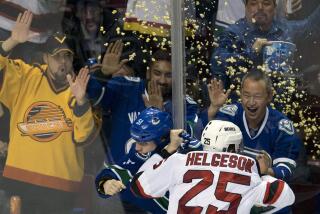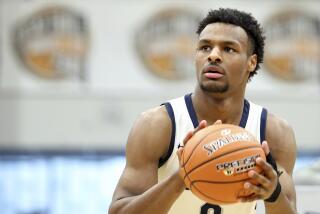Detecting the impact of concussions, from pros to young athletes
- Share via
Concussions are a fact of life for pro sports figures. Consider the news on Wednesday alone:
-- Major league baseball player Justin Morneau of the Minnesota Twins won’t return to play soon because of the lingering effects of a concussion he suffered during a July 7 game. (Read the details in the Los Angeles Times story “It’s one concussion and ‘you’re out’ at the old ballgame.”)
-- Chicago Bears quarterback Jay Cutler returned to practice, but whether he’ll play soon remains in question after he suffered a concussion during a game Sunday.
-- Hockey player Ian Laperriere of the Philadelphia Flyers was urged to retire from hockey because of post-concussion symptoms after being hit by a puck in April, according to news reports.
Of course, these types of injuries also are found in athletes on all levels: college, high school and youth teams. The Centers for Disease Control and Prevention estimates that U.S. emergency rooms treat 135,000 sports- and recreation-related traumatic brain injuries, which include concussions, each year among children 5 to 18.
So how do young athletes know when they’ve been injured? Many don’t, according to the report “1 prep football season, 1,800 hits to the head” in the Chicago Tribune. Julie Deardorff, writing on the Tribune’s blog Julie’s Health Club, points to a novel approach in tracking injuries in “Can ‘intelligent’ mouth guards detect concussions?”
-- Mary Forgione / Los Angeles Times
More to Read
Go beyond the scoreboard
Get the latest on L.A.'s teams in the daily Sports Report newsletter.
You may occasionally receive promotional content from the Los Angeles Times.










